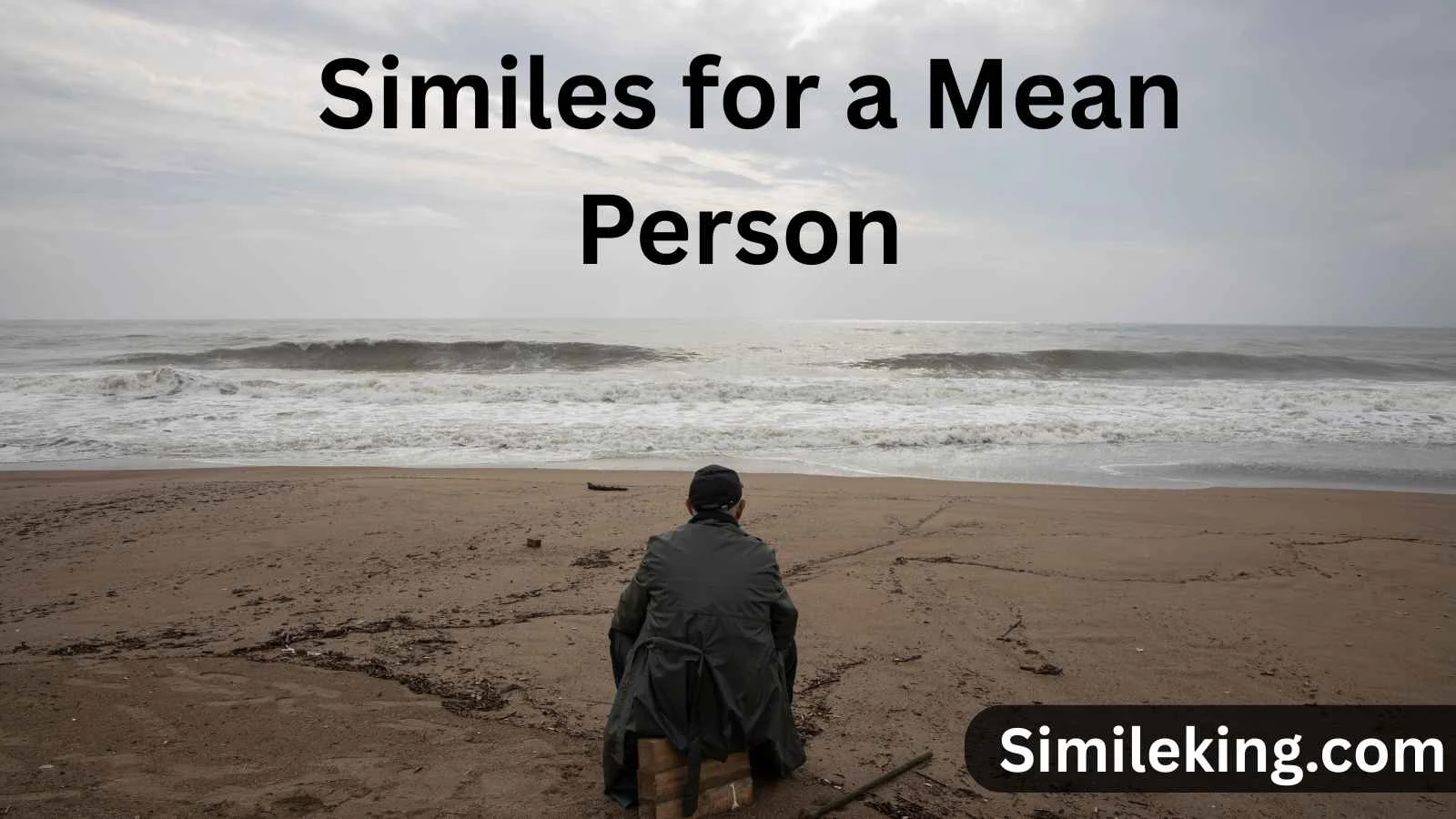Language is a powerful tool to describe people and their behavior.
When discussing someone who exhibits unkind or harsh behavior, it’s important to choose words that fit the context and your relationship with that person.
Similes, which compare one thing to another using “like” or “as,” offer creative and vivid ways to capture a mean person’s attitude without being overly harsh or offensive.
This article will present 15+ similes for a mean person, ranging from gentle and polite to straightforward and casual.
We’ll also discuss how to use these similes appropriately, depending on the audience and situation, ensuring respectful communication without losing expressiveness.
What Is a Simile?
A simile is a figure of speech that compares two different things using “like” or “as” to create a vivid image. For example, “She’s as cold as ice” compares a person’s demeanor to ice, emphasizing coldness in personality.
Using similes helps paint mental pictures, making descriptions more relatable and impactful. When describing a mean person, similes can soften the criticism or highlight the harshness depending on how they are framed.
Why Use Similes for Describing Personality?
- Softening Impact: Direct insults can escalate conflicts; similes allow for subtlety.
- Clarity: Similes help communicate feelings clearly with imagery.
- Creativity: They enrich language and keep communication interesting.
- Tone Adaptability: Depending on the simile, you can sound formal, humorous, or casual.
15+ Similes for a Mean Person
Here is a categorized list of similes suitable for different contexts and tones when describing someone who is mean or unkind.
Polite and Professional Similes
These similes express harshness in a respectful, non-insulting way. Useful for work or formal conversations.
- As cold as a winter morning
Conveys emotional distance or unfriendliness without harshness. - Like a storm cloud on a sunny day
Indicates someone who brings negativity unexpectedly. - As sharp as a thorn bush
Suggests the person’s words or behavior can hurt. - Like a frost that chills the air
Expresses how their attitude makes the environment uncomfortable. - As unyielding as a stone wall
Shows stubbornness and a lack of empathy.
Casual and Friendly Similes
These are more relaxed and can be used in informal conversations without sounding too harsh.
- Like a cactus—prickly on the outside
Means they may be tough or mean but could have a softer inside. - As grumpy as a bear woken from hibernation
Humorous way to describe someone’s bad mood or mean streak. - Like a porcupine, hard to get close to
Indicates they push others away with their attitude. - As biting as winter wind
Suggests sharpness in demeanor or speech. - Like a sour lemon in a basket of apples
Means they stand out negatively among others.
Strong and Direct Similes
Use with caution; these may sound more blunt or critical.
- Like a venomous snake ready to strike
Indicates a person who may be intentionally harmful. - As fierce as a hawk on its prey
Describes someone aggressive or intimidating. - Like fire that burns without warning
Highlights sudden bursts of anger or cruelty. - As cold as a blade’s edge
Suggests cruelty that cuts deeply. - Like a wolf stalking its prey
Conveys predatory, hostile behavior.
Bonus Simile:
Like a shadow that darkens the room
Implying someone whose presence brings discomfort or negativity.
How to Choose the Right Simile
Consider the Context
- Professional Setting: Use polite similes to avoid offending colleagues or superiors.
- Casual Chats: Friendly or humorous similes work better with friends.
- Serious Conversations: Strong similes may be necessary but use them carefully.
Gauge Your Relationship
- With close friends or family, humor can lighten the tone.
- With acquaintances or strangers, stay neutral or polite.
Purpose of Your Message
- To express mild annoyance, use softer similes.
- To call out serious unkindness, stronger similes may be justified.
Examples of Using Similes for a Mean Person in Sentences
- “She can be as cold as a winter morning, so it’s hard to get close to her.”
- “He’s like a storm cloud on a sunny day, always bringing tension to the group.”
- “Sometimes his words are as sharp as a thorn bush, so I try not to take it personally.”
- “She’s like a cactus—prickly on the outside but not all bad once you get to know her.”
- “That comment was as biting as the winter wind; it really hurt.”
5 User-Friendly Texting Examples Optimized for Google
Here are texting examples that readers can use or adapt in conversations or social media:
Example 1:
“Honestly, he’s been as cold as a blade’s edge lately—hope he warms up soon.”
Example 2:
“Don’t mind her; she’s like a cactus—looks tough but actually soft inside.”
Example 3:
“He was like a venomous snake with those words—really stung!”
Example 4:
“Sometimes you just have to accept that some people are as unyielding as a stone wall.”
Example 5:
“Her mood was like a storm cloud on a sunny day, totally killing the vibe.”
Nuances of Tone When Using Similes
- Light and playful: Similes like “grumpy as a bear” add humor and soften criticism.
- Serious and direct: Similes like “venomous snake” express strong disapproval or warning.
- Neutral and respectful: Similes like “cold as a winter morning” are good for maintaining professionalism.
Tone helps the receiver understand your intent and avoid misunderstandings. It’s always wise to match your simile to the sensitivity of the situation.
Conclusion
Using similes to describe a mean person gives you a flexible, creative way to express feelings or observations without being unnecessarily harsh. Whether in professional settings or casual chats, selecting the right simile and tone can help communicate your message clearly and respectfully.
Use these similes thoughtfully, and you’ll add color and nuance to your language while maintaining politeness and professionalism where it matters.





